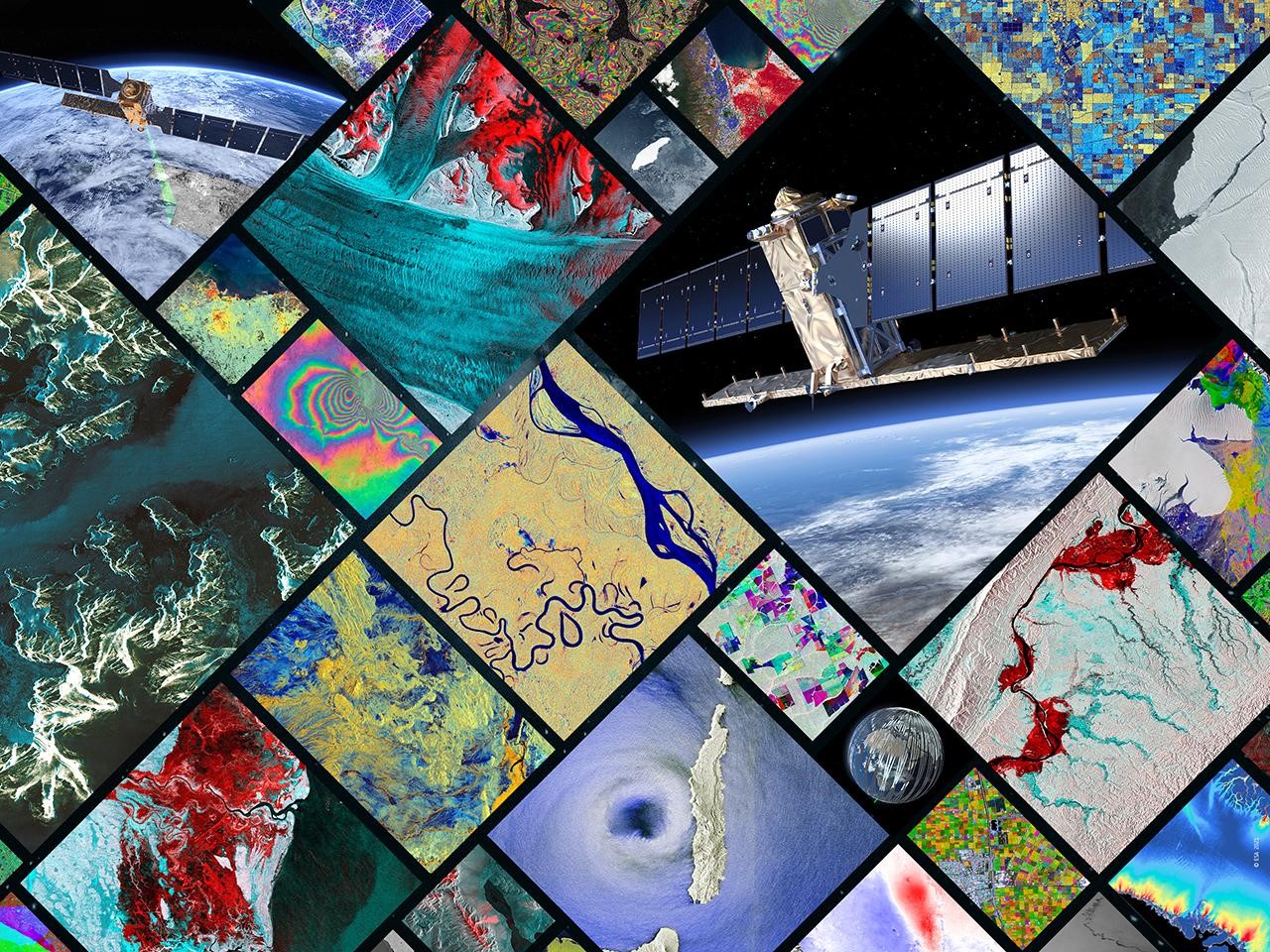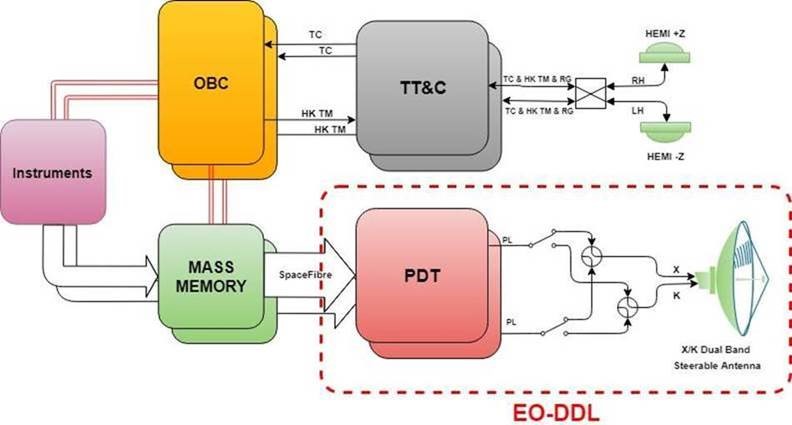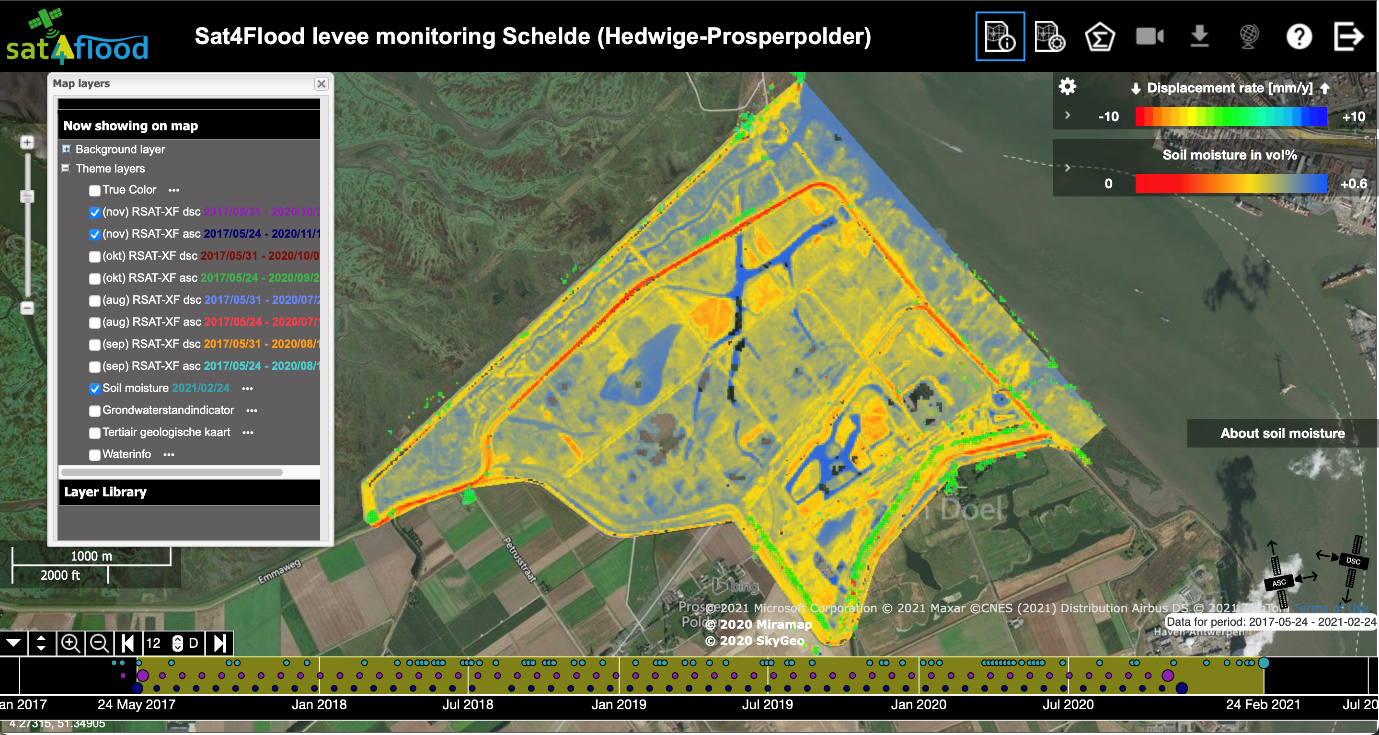Miramap, SkyGeo and 52impact have successfully completed the Sat4Flood activity as part of the InCubed programme, demonstrating the ability to estimate and visualise the risks of levee failure using Earth observation data. Sat4Flood is now rolling out the product to water safety organisations and has started to generate revenue.
Sat4Flood provides organisations responsible for water safety with a cost effective tool to better understand and manage levee failure risks globally. Dutch activity partners Miramap, SkyGeo and 52impact developed the Sat4Flood monitoring service by combining satellite high-resolution soil moisture data with Interferometric SAR deformation data and other Earth observation data sources.
Since completing the InCubed activity, the Sat4Flood activity partners have started engaging with potential customers and rolling out the product commercially, beginning with water authorities and international engineering companies. As a result Sat4Flood is expected to soon join the ranks of former InCubed activities that are generating revenue.
Sat4Flood Project Manager Yvette Pluijmers from Miramap said: ‘’By combining our companies’ extensive experience in monitoring levees, we have been able to develop state-of-the-art technologies that can identify and monitor levee failures. The consequences of levee failure are huge and so Sat4Flood provides users with a much-needed product to help prevent the devastating impacts of levee failures.’’
Sea level rise, extreme weather such as hurricanes, storms and drought events around the world continue to cause levee failures. This can lead to critical flood defence failures resulting in tragic losses of life and the devastation of large areas. Sat4Flood service helps water safety organisations to prevent such failures by providing continuous and reliable monitoring of levees. The Sat4Flood service web portal provides information in a user-friendly way and potential levee hazard alerts are pushed to service users in order to proactively mitigate the risk.
ESA’s InCubed programme supported the development, validation and commercial viability of Sat4Flood. This included identifying key target customers, gathering their feedbacks on levee failures identification and visualisation to validate the product, up to engaging with three potential customers in a proof of concept validation. The proof of concept was a great success, the engaged customers received three months of fully operational service, to which they provided very useful feedback to further fine-tune the product.
Amanda Regan, Head of the Φ-lab Invest Office and InCubed Programme Manager, said: ‘’Sat4Flood provides water safety organisations with an invaluable product to monitor levee failures. The InCubed team have enjoyed working with Miramap, SkyGeo and 52impact to develop Sat4Flood and we wish them all the best in their commercial roll-out.’’
The Sat4Flood InCubed activity commenced in September 2019 and was successfully concluded during the final review in March 2021. A major finding of the activity was a clear confirmation of the benefits that satellite based systems like Sat4Flood can provide to users with customisable levee monitoring information.
To know more: Sat4Flood InCubed activity, Sat4Flood website, Sat4Flood video pitch




